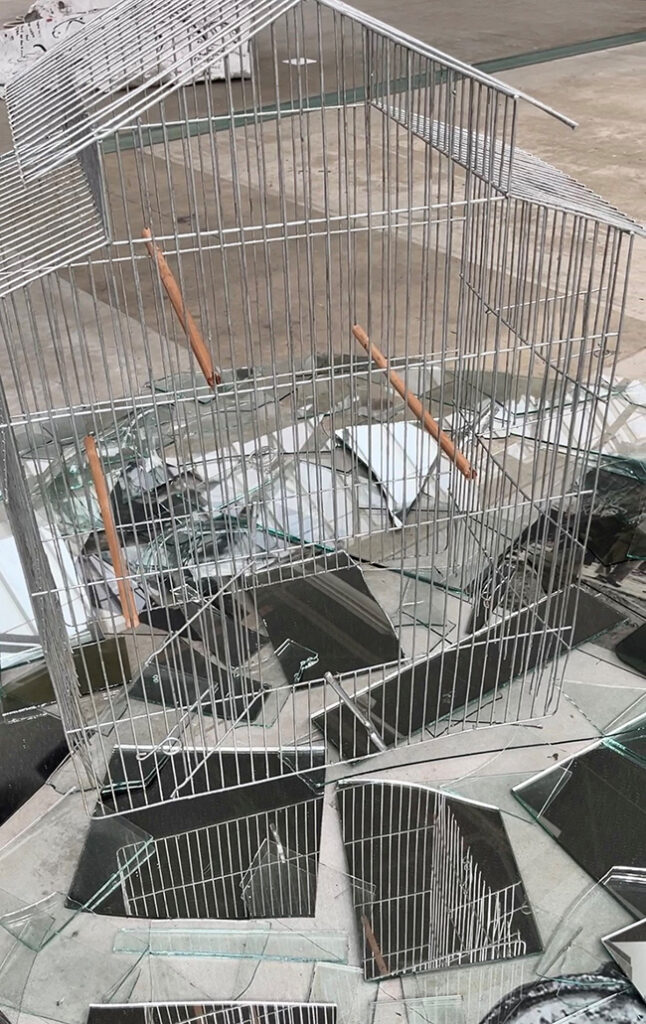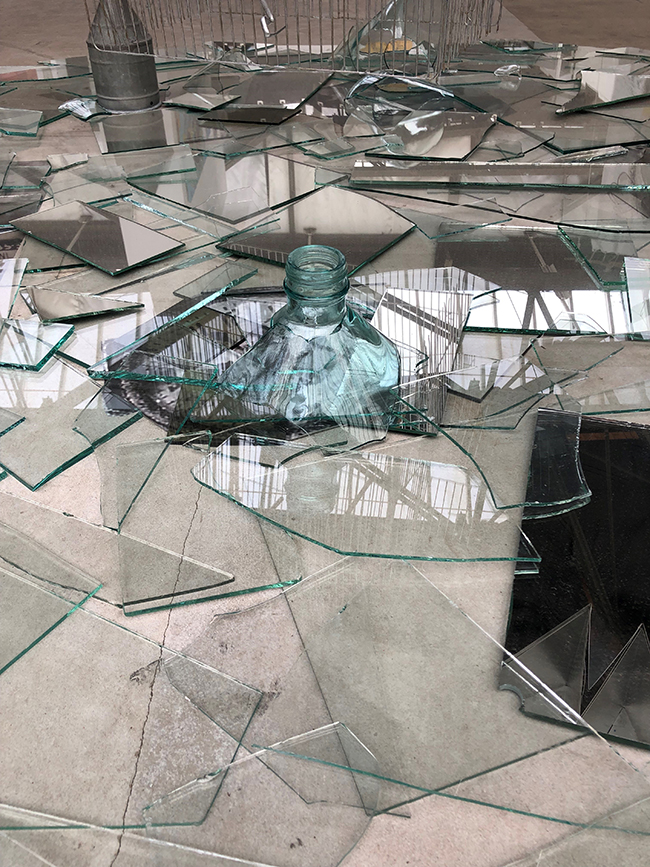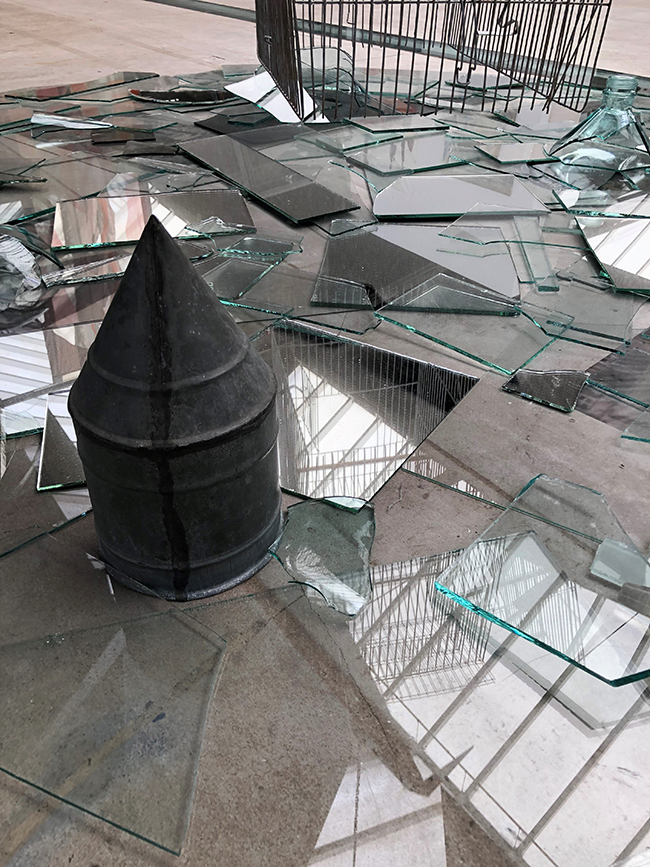Caroline Kampfraath is a Dutch sculptor whose art pieces are known for their thematic depth and often come as installations. Caroline believes each work demands its own unique material, challenging her artistic boundaries. She uses a visual language filled with symbols such as engorged veins, dead dogs, and kidney-shaped dishes, creating a surreal atmosphere. Her materials range from natural resin to bronze, each adding a contrasting element to her work. The imagery in her sculptures is often surreal and puzzling, requiring more than a glance to fully interpret. Her titles provide hints to the underlying meanings, inviting viewers into a deeper exploration.

Caroline’s most personal sculpture to date is currently displayed at the NDSM FUSE cultural spot in Amsterdam, as part of the Nieuw New Babylon exhibition. This piece reflects her vision on significant future issues like climate change and wars, highlighting the importance of new myths and visions. Her work, Fly to Me, my Enemy, addresses the repetitive nature of armed conflicts and their lasting impact on families. The trauma of war lingers across generations, with past conflicts breeding new aggressors. This theme is deeply personal to Caroline, as her family was affected by the Japanese occupation of the Dutch East Indies during World War II. The crane, a symbol of happiness and longevity in Japan, represents the hope for a peaceful future despite the traumas of the past. The open cage in her sculpture symbolizes the present, filled with glass pieces, old photos, and mirrors connecting the past with the present, while folded cranes suggest the creation of a hopeful future.
Caroline Kampfraath’s art is a testament to her belief that each artwork demands its own material. This approach leads her to work with a wide array of materials, including natural resin, clay, flax, artificial resin, wool, lead, plaster, glass, bronze, and stone. These materials, seemingly mismatched, captivate the audience through their contrasting nature. The symbolism in her work—engorged veins, dead dogs, kidney-shaped dishes—adds layers of meaning, creating a surreal and often alienating atmosphere. Her titles provide clues, yet the full interpretation of her art requires thoughtful engagement.
Fly to Me, my Enemy is a powerful example of Caroline’s thematic and material versatility. The sculpture explores the cyclical nature of armed conflict and its intergenerational trauma. Caroline draws from her family’s history, particularly the Japanese occupation of the Dutch East Indies, to convey the lasting scars left by such events. The crane, folded meticulously within the piece, symbolizes a wish for happiness and long life, contrasting with the destructive past. The cage, representing the present, is filled with fragments of glass, old photographs, and mirrors, connecting the viewer to the memory of those who couldn’t speak about their experiences. This juxtaposition of elements—fragile cranes and harsh glass—mirrors the complex relationship between past traumas and future hopes.
Caroline’s ability to blend diverse materials into a cohesive artwork is a hallmark of her practice. Each material choice is deliberate, enhancing the narrative she wishes to convey. The use of natural resin, for instance, adds a lifelike texture to her sculptures, while lead and bronze impart a sense of permanence and weight. Her work is not just about the materials but also about the stories they help tell.
The surreal and puzzling nature of Caroline’s sculptures invites viewers to look beyond the surface. Her symbols—engorged veins, dead dogs—are not easily decipherable, compelling the audience to engage deeply with the artwork. The enigmatic quality of her pieces is intentional, creating a dialogue between the art and its viewers. Her titles act as entry points, offering hints that guide interpretation but never fully disclose the artwork’s meaning.

In Fly to Me, my Enemy, Caroline encapsulates the essence of her artistic philosophy. The sculpture’s open cage, glass fragments, and folded cranes are meticulously arranged to tell a story of conflict, trauma, and hope. The mirrors within the piece reflect the present, connecting it with the past, while the cranes symbolize the potential for a better future. This work is not just a personal reflection on her family’s history but also a universal commentary on the enduring impact of war and the possibility of healing.

Caroline Kampfraath’s art is a journey through materials, symbols, and themes. Her sculptures challenge viewers to think deeply about the narratives she presents. Each piece is a testament to her skill and her commitment to exploring the profound issues that shape our world. Through her art, Caroline invites us to reflect on the past, engage with the present, and imagine a hopeful future.

